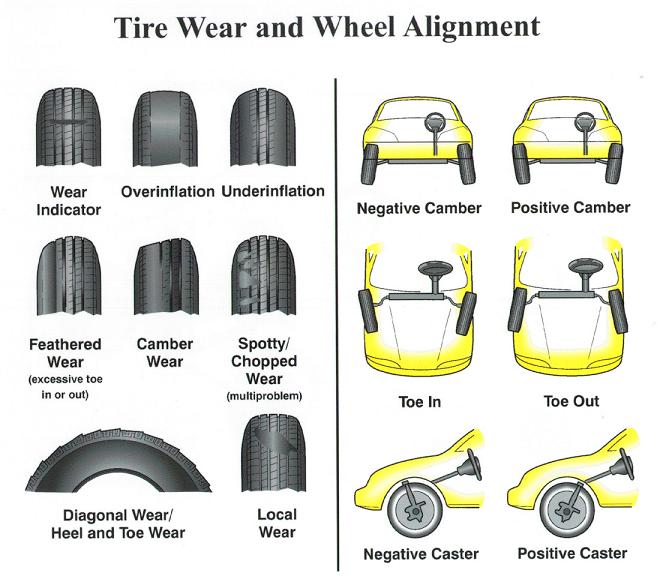
"Caster" is the rearward tipping of the steering axis, and is the one aspect of front end alignment responsible for most steering quirks. The rearward tip of the steering axis is what causes a vehicle to track straight when you take your hands off of the wheel, and what causes the wheel to return to center when you let go.
Thrust Angle and Steering Wheel Position
Thrust angle (other than zero) occurs when the individual rear toe values are unequal.
The easiest example to imagine is for a car with a live rear axle (one piece) that has the axle fitted crocked in the body such that one rear wheel has toe-in and the other one has toe-out.
Thrust line is an angle of the resultant drive direction compared to the vehicle centreline. Cars driven with high thrust angles may appear to 'crab'.
On cars, which have independent suspension, some are individually adjustable for toe, which can then be used to correct both the toe-in and thrust line together.
Thrust angle should where possible always be adjusted to zero, to coincide with the vehicle centreline.
Sign definition
A positive thrust angle is one that points to the left.
A negative thrust line is one that points to the right.
Straight steering wheel
Errors in the steering wheel being straight on road test can be the rear toe being wrong and a high thrustline. (As well as the front track-rods being adjusted un-equally or steering wheel having been fitted incorrectly).
Computerised aligners measure and record the thrustline and at the adjustment stage will set the steering wheel level allowing for any thrust angle. It is for this reason that the adjustment step on all aligners takes you first through rear toe adjust, to give you the opportunity of reducing the thrust angle as far as possible, before moving on and adjusting the front toe and steering wheel.




